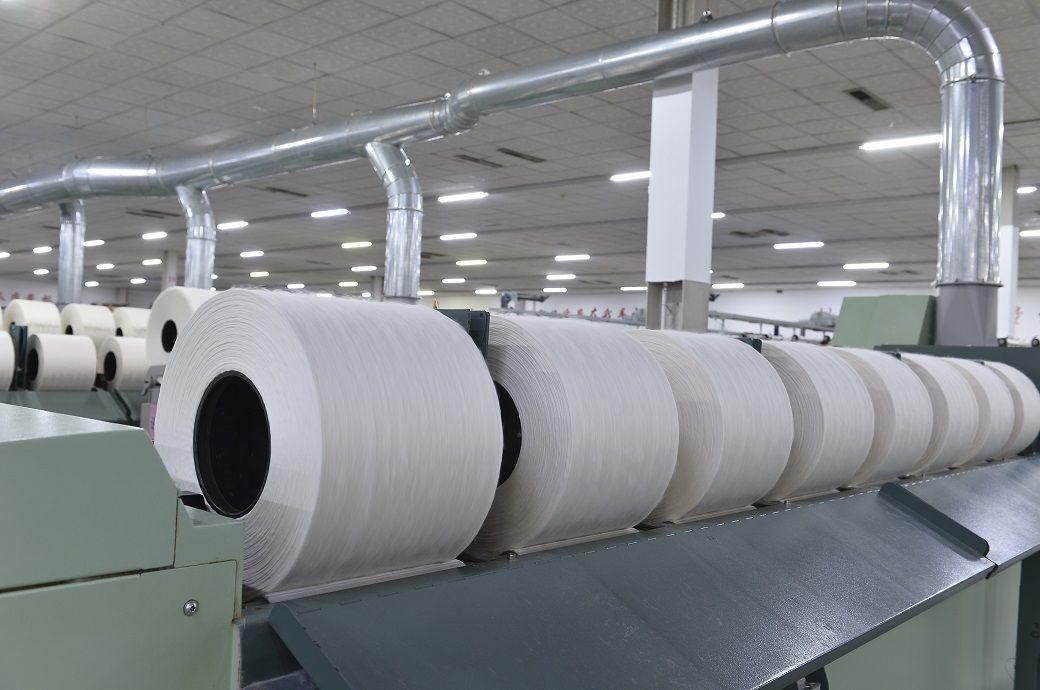Regional textiles and motif influences
The shimmering zari of Banarasi brocade, the airy jamdani of Bengal, the temple borders of Kanjeevaram and the block prints of Rajasthani are regional crafts that are no longer limited to their origins but are now reinvented as the DNA of modern bridal collections.
Take for example a regional handcrafted lehenga inspired by Banarasi silks; Nowadays, it is often paired with minimalist blouses or off-the-shoulder cuts. A Bengali jamdani fabric could be transformed into a lehenga skirt with organza overlays, keeping the essence of the muslin intact but adding movement to the aisle.

Kanjeevaram borders are no longer limited to the pallu of a saree but are found stitched on hems, jackets or even belts of lehenga. And let’s not forget the playful resurgence of Rajasthani block prints on bridal mehendi suits; The traditional textile influence now also dances in pre-wedding celebrations.
Traditional Indian motifs such as paisleys, lotuses, kalgas and peacocks still dominate, but have been stylized to suit modern bridal embroidery palettes. Basically, the motifs remain timeless, while the canvas evolves.
Heritage curtains reinvented
The saree, ghagra and dupatta are not disappearing but they are changing shape. Bridal fashion has become a playground for fusion bridal fashion, where traditional draping inspires unexpected silhouettes.
One could wear lehenga-saris, a half-sari, half-lehenga experiment that satisfies the need for movement without compromising elegance. Or caped lehengas, where dupattas are transformed into structured capes. Even asymmetrical draping, pleated, pinned or cascading, nods to classic pleats while creating contemporary bridal silhouettes.
These hybrids are not only stylistic but also practical. Today’s brides want Instagram-worthy drama that’s also easy to navigate between dances, rituals, and endless photos.
Evolving embellishment techniques
No conversation about Indian bridal couture is complete without embellishments. Zardozi, gota patti, mirrors and cutdana, these heritage ornaments once defined opulence. But modern brides want lighter, more breathable and versatile outfits without losing art.

Celebrities, catwalks and cultural renaissance
Celebrity weddings set unofficial trends. From Deepika Padukone’s Kanjeevaram revival to Anushka Sharma’s pastel lehenga moment, stars have revived brides’ interest in traditional wear. Designers, in turn, are responding by reworking classics for bridal fashion trends.
Fashion weeks further amplify this resurgence. A Sabyasachi show could highlight the jamdani, while newer brands experiment with Rajasthani tie-dye for cocktail dresses. Takeout is a cultural renaissance trend that is not a sentimental nod but also a commercial impulse. And when a celebrity wears it, the trend increases overnight.
Color stories from tradition to trend
Red was once the non-negotiable choice for Indian brides. Today, bridal color trends are rewriting that rule book. Yes, the deep reds, maroons and golds of tradition still have symbolic value, but they have been joined by blush pinks, mint greens, ivories and even electric jewel tones.

This evolution of the traditional palette reflects a change in mentality: brides are leaning towards palettes that suit their personalities rather than rigid customs. From muted pastels that whisper sophistication to bold emeralds and sapphires that roar with modern royalty, modern wedding colors prove that heritage is no longer defined by a single hue.
Sustainable renaissance and artisanal collaboration
Amid all this shine, there is a change based on sustainability. Brides are increasingly aware of fashion waste, which has fueled a movement towards sustainable bridal couture. Handmade silks, naturally dyed fabrics and recycled zari are making a quiet but steady comeback.
More importantly, artisanal collaboration is back at the center. The designers are working directly with weavers, block printers and embroidery houses to ensure authenticity while ensuring livelihoods. This resurgence of handloom is not just a trend, but a conscious bridge between artisanal heritage and the future of fashion.
Global weddings and adaptation
Indian weddings now have no borders and are celebrated in the vineyards of Tuscany, the beaches of Bali or the ballrooms of Dubai or even on the outskirts of India. This global diffusion has also influenced bridal fashion. Destination bridal wear demands lightweight fabrics, removable dupattas and travel-friendly couture so that they have the least weight on your shoulders.
A heavy Kanjeevaram could be reinterpreted in georgette, or a layered lehenga can come with modular skirts to alternate between ceremonies. In short, global bridal fashion is about taking Indian heritage and adapting it to international climates, locations and sensibilities. We are representatives of Indian fashion and culture in a strange place. This is where lightweight bridal couture becomes the modern bride’s best friend.
Tips for brides: balance between tradition and modernity
So how do brides navigate between heritage and modern aesthetics? Some simple rules help:
Choose a statement heritage feature, a Banarasi dupatta, a zardozi blouse or a Kanjeevaram inspired border and let it anchor the look. If one tries to incorporate everything, then the look can be striking.

Play with contrasts; Heavy textiles with a minimalist style or pastel color palettes with bold jewelry and light makeup. The key is not only the outfit but everything that complements it.
Embrace modularity, detachable sleeves, dupattas or jackets allow versatility for different functions and also provide a modern look.
At the end of the day, bridal styling tips aren’t about choosing sides. The best modern wedding outfit ideas celebrate individuality while combining tradition and trend.
Traditional Indian attire is more than a heritage, it is a living language evolving into the bridal trends of tomorrow. From textiles to colors, from curtains to decorations, it continues to inspire while adapting to new contexts.
The lesson is clear. It is letting heritage be your muse, not your limit. After all, the magic of Indian bridal couture lies in its ability to look back on centuries of tradition, while moving confidently into the future.
Brands like WNW illustrate how traditional inspiration can be translated into modern bridal elegance, proving that a bride does not have to choose between heritage and individuality. You can use both, wonderfully.



